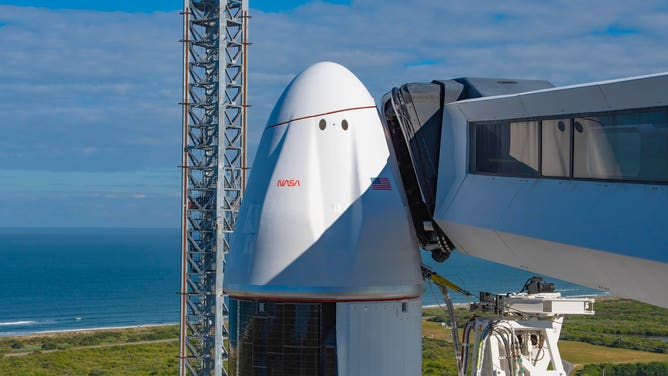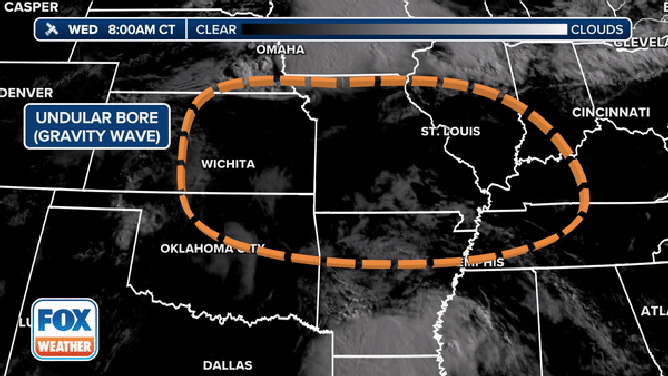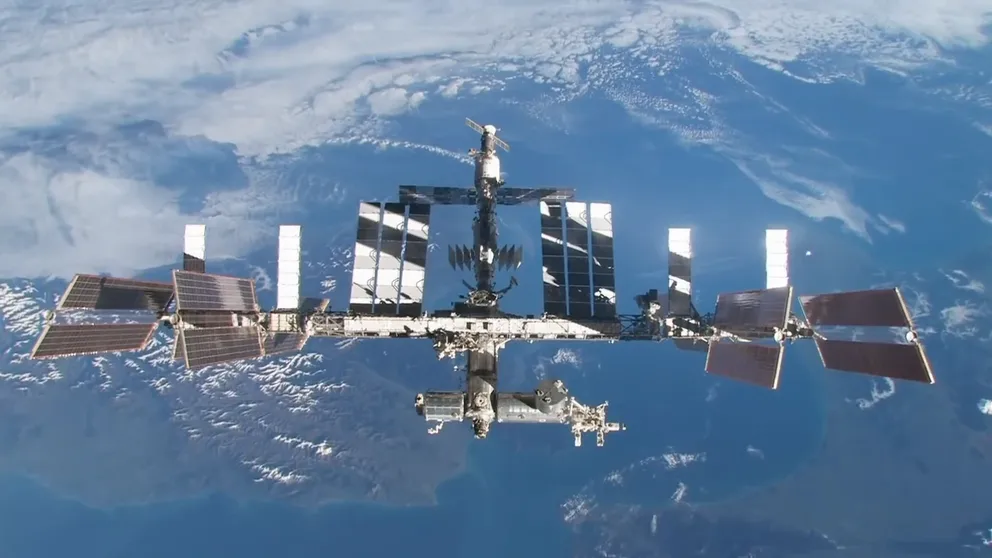Turkey, cranberry sauce headed to space as SpaceX launches holiday supplies to ISS
Weather was clear for liftoff that occurred around 8:28 p.m. EST on Thursday. The cargo resupply launch includes holiday snacks, fresh produce and new science investigation for the ISS laboratory.
SpaceX launch from Florida's Space Coast
NASA and SpaceX successfully launched a resupply mission to the International Space Station from Florida.
KENNEDY SPACE CENTER, Fla. – SpaceX successfully launched supplies, science and groceries on Thursday for astronauts living aboard the International Space Station.
A Dragon spacecraft packed with 6,500 pounds of goods for the space station launched aboard a Falcon 9 rocket from NASA's Kennedy Space Center at 8:28 p.m. EST.
According to SpaceX, the Falcon 9 booster supporting this mission previously launched the Crew 7 astronaut mission, and after its launch, successfully landed on a barge ship in the Atlantic Ocean.
After a 32-hour spaceflight, Dragon will dock at the ISS Harmony module on Saturday morning, where NASA astronauts Loral O'Hara and Jasmin Moghbeli will monitor the Dragon's arrival.
Forecasters with the Space Force's 45th Weather Squadron reported weather conditions at the time of launch from the Space Coast don't usually get more favorable than what the launch crew experienced.
"If you have the pleasure of being here on the Space Coast today and go outside, you'll notice very sunny skies and a few low-top clouds there. But in general, the weather (Thursday) will be largely similar to what we see today," Lovin said. "So that's all due to the high pressure across the area."
What's launching on CRS 29?

SpaceX Dragon spacecraft and Falcon 9 rocket seen at Kennedy Space Center launchpad 39A in Florida ahead of the CRS 29 launch. (Image: SpaceX)
(SpaceX / NASA)
The mission marks SpaceX’s 29th supply run to the orbiting laboratory for NASA and SpaceX's 81st rocket launch of the year.
With the upcoming holidays, the astronauts will get a special grocery delivery with this launch, including pumpkin spice cappuccinos, chocolate, cranberry sauce and turkey. Other groceries include pizza kits, fresh produce and specialty cheeses.
A replacement for a tool bag lost during a spacewalk last week will be among the hardware flying on CRS 29. According to ISS deputy program manager Dana Weigel, the crew lock bag contained some tethers and tool sockets.
At any given time, hundreds of ongoing research investigations are happening at the laboratory orbiting 250 miles above Earth. After the Dragon arrives, a whole new batch of science will begin.
The Dragon will be packed with new science investigations for NASA, including the Atmospheric Waves Experiment (AWE), studying gravity waves and how they affect space weather.
ISS Program Research Office deputy chief scientist Meghan Everett said AWE is a new way to look at gravity waves, the little pockets of energy that start small at low altitudes and grow as they get higher into the atmosphere. The ISS makes an excellent place to measure gravity waves because they are bigger at higher atmospheres.
"We are hoping that by measuring these atmospheric, or these gravity waves, we can get a better idea of space weather which could impact climate change or how wind and space affect our satellites," Everett said.

File: An example of a gravity wave pushing through the Plains.
(FOX Weather)
Biomedical research investigations are launching with this supply run to develop treatments for various medical issues, including respiratory illness, female reproductive health, liver cell regeneration and cognitive decline.
A U.S. Naval Research Laboratory study will look at using new melanin variants to apply as radiation-protective coatings on spacecraft and spacesuits. According to the ISS National Laboratory, melanin is known for its ability to protect against harmful elements, including radiation and chemicals.
Dragon will spend about a month docked at the space station before returning to Earth with research, splashing down off Florida's coast.
Later this month, NASA and its ISS partners will celebrate the 25th anniversary of the launch of Zarya, the first module of the International Space Station.
"Looking back over the past 25 years and seeing our space agency grow and how the international partnerships have flourished and how much research we've accomplished on the vehicle," Weigel said. "As of today, 273 people from 21 countries have visited the International Space Station, which is pretty impressive."
What is the International Space Station?
The International Space Station (ISS) has hosted astronauts living and working in space for more than two decades, making groundbreaking contributions to technology and medicine along the way.

